Search Results
BART Connects: Why Eric’s students at the Orientation Center for the Blind ‘fall in love’ with BART when they come to the Bay
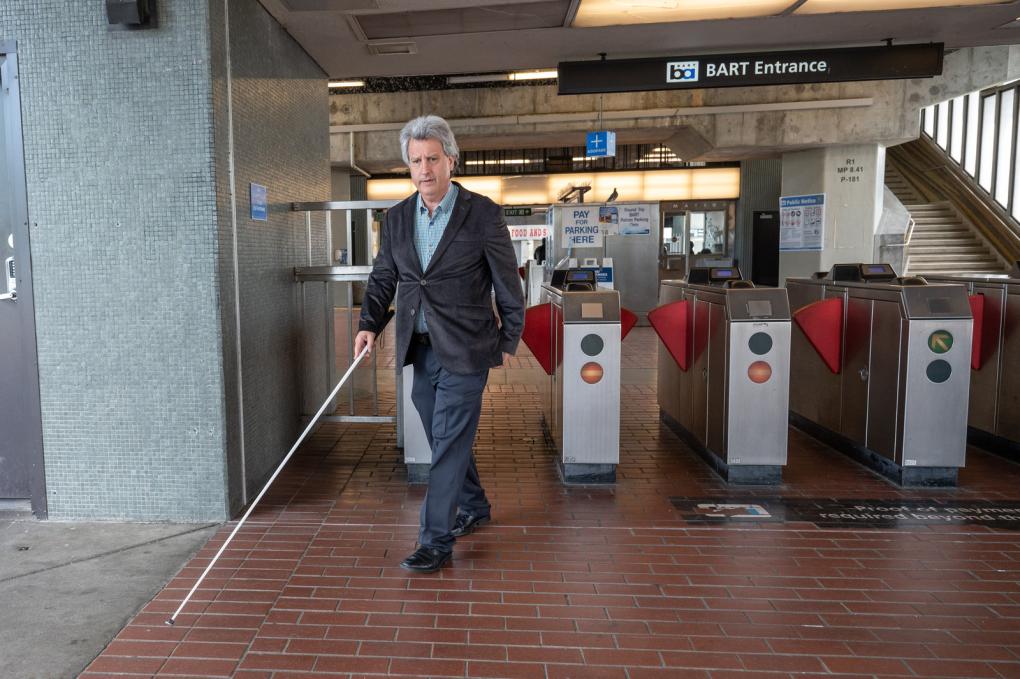
Eric Mazariego navigates El Cerrito Plaza Station.
BART is developing detailed descriptions of station tactile guideways, a navigation system for riders who are blind and low vision that leads to bus bays, fare gates, and platform stairs. Find the descriptions here and read the story of their development here.
Eric Mazariegos has been taking BART “forever.”
His earliest BART memory is riding trains to eye doctor appointments in San Francisco with his mom. He was eight years old when he started losing his vision, and it took doctors two years to figure out what was happening. That meant lots of appointments – and lots of BART.
Those long BART rides from his home in Concord to San Francisco and back turned out to be a useful educational tool as his vision loss continued.
“I rode it so much as a kid, I’d memorized a lot of the stations,” he said. “I had a head start [for navigating the system without vision].”
Later in life, he began taking BART regularly, first to get to class at San Francisco State, then a job in Fremont, and now to his current workplace, the Orientation Center for the Blind (OCB).
“It’s my primary mode of transportation,” he said. Rideshares fill in the blanks when necessary (though BART is always his first choice).

Eric uses his white cane to follow the tactile guideway at El Cerrito Plaza.
When Eric navigates a BART station, he is listening to the sounds around him and translating the tactile clues from his white cane to the spatial map in his mind.
Every BART station has a unique soundscape and tactile geography that allows Eric to make his way through a station and onto a BART train.
“I listen for the turnstile, so I know where to enter. I feel for the carpets near the escalators – a clue that I’m almost there. I hear my cane on the metal landing platform. Then I ascend to the platform,” Eric said, describing some of the cues he uses to navigate a station without vision. When he reaches the platform, there are other guide tools – bumpy tactile guideways that signal you are nearing the trackway, speakers announcing the approach of trains.
Part of Eric’s job is to support people like him -- people who are blind or low vision -- in learning to move around their cities and regions.
Eric serves as the Administrator of OCB, a 60-year-old residential training program run by the Department of Rehabilitation (DOR) that provides free on-site training to job seekers who are visually impaired and blind. Said Eric: “The mission of the DOR is everyone who wants to work can work.”
Eric started at OCB as a dorm counselor in 1999. Twenty-five years later, he’s overseeing the organization’s entire staff of 35. To get to OCB from his home in Concord, Eric takes BART, twice a day, five days a week. Without it, his travel options would be extremely limited.
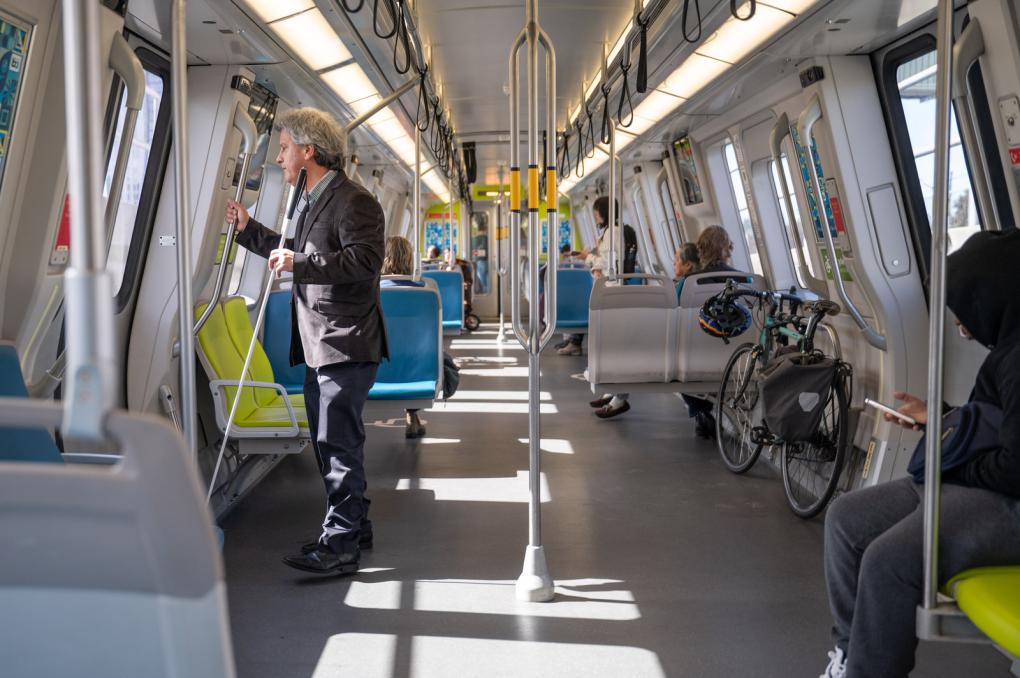
Eric stands on a BART train.
The OCB campus is about a half mile from El Cerrito Plaza Station. Every day of the week, you’ll see OCB participants on campus going to and from classes, which include courses such as Daily Living Skills, Cooking, Braille, Adaptive Technology training, and independent travel. Some students are new to blindness. Some come from outside of the Bay Area. Many live on campus through the duration of their training course.
“I’d have to find a job closer to my house,” he said. “BART opens up the possibilities to work wherever you want, and your job is a huge part of your life. A lot of people take that for granted.”
There’s a learning curve for OCB students ready to set out on their own via public transportation. First, they must learn white cane skills so they can detect obstacles and pathways and safely orient themselves in spaces they haven’t experienced before.
Teachers provide hands-on guidance and “BART field trips” to show students how to confidently navigate the system, and they have tactile maps of some stations so they can get a sense of their layouts. Many students want to go out and learn by experiencing it for themselves.
“When students advance to the point of being able to use BART, they love it. It’s so freeing because it takes you everywhere, runs frequently, and is dependable,” Eric said. “A lot of our students come from Southern California, and they’re not used to having great transit. Many don’t like going back home because they fall in love with our transportation system.”
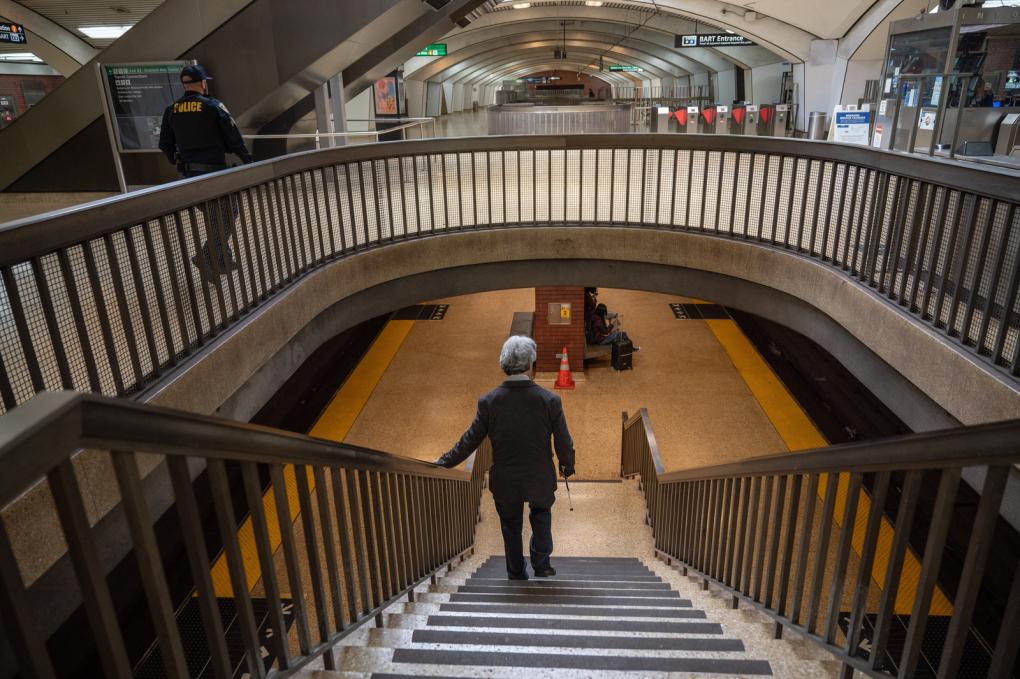
Eric enters Downtown Berkeley Station's platform via the stairs.
About BART Connects
The BART Connects storytelling series was launched in 2023 to showcase the real people who ride and rely on BART and illustrate the manifold ways the system affects their lives. The subjects of BART Connects will be featured in videos as well as a forthcoming marketing campaign that is slated to run across the Bay Area. Find all the stories at bart.gov/bartconnects.
The series grew out of BART's Role in the Region Study, which demonstrates BART’s importance to the Bay Area’s mobility, cultural diversity, environmental and economic sustainability. We conducted a call for stories to hear from our riders and understand what BART means to them. More than 300 riders responded, and a selection of respondents were interviewed for the BART Connects series.
BART Connects: A working mom remembers when her only downtime each day was her BART ride
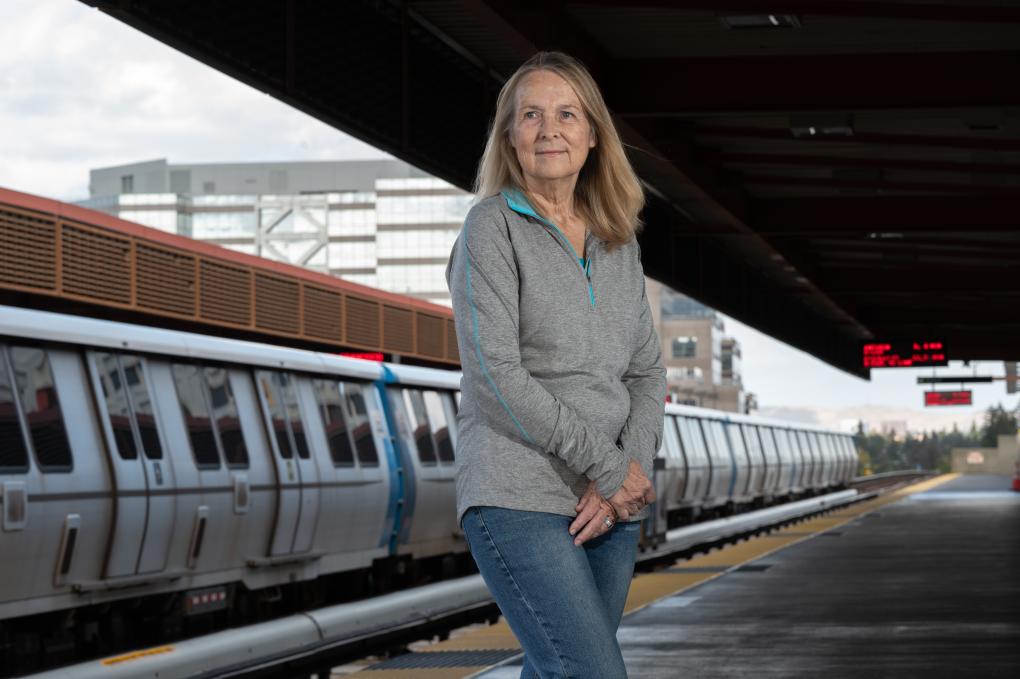
Linda Healey pictured at Walnut Creek Station.
Do you have a favorite BART memory or story to share? Email a short summary to BART Storyteller Michelle Robertson at [email protected], and she may follow up to schedule an interview.
Linda Healey took BART to work for more than twenty years. When her son was young, those daily BART rides were her only downtime in the day.
“BART got me home to my child quickly,” she said. “And it got me home unstressed because I could relax, rather than sit in traffic. That was a gift.”
Now retired, Healey still looks back on her BART commute fondly. Each morning, Healey would walk about ten minutes from her home to Walnut Creek Station, where she’d board a San Francisco-bound train.
During the ride, she finally had a few minutes time to read, and she treasured that time. She alternated between the classics and pure “pleasure reading,” from Finnegan’s Wake to Agatha Christie. Thirty minutes or so later, she’d disembark at one of the Market Street stations in San Francisco and head to work for the day at a large financial institution.
Healey still takes BART to those same stations, but nowadays, her destination is mostly dinner or the theatre, a lifelong passion of hers. In the eighties, she said she took BART to see the original touring casts of classics like Cats, Phantom of the Opera, and Les Misérables. She’s especially grateful for BART’s Senior Clipper card, which gets her 62.5% off her fare.
One of Healey’s most treasured BART memories doesn’t involve her commute or theatergoing. Eleven years ago, she met a 21-year-old Italian woman on a train who was traveling alone. Her name was Stefania, and she couldn’t remember which station she was supposed to meet her aunt at, but knew she lived in Danville. Healey suspected Walnut Creek was their meeting place.
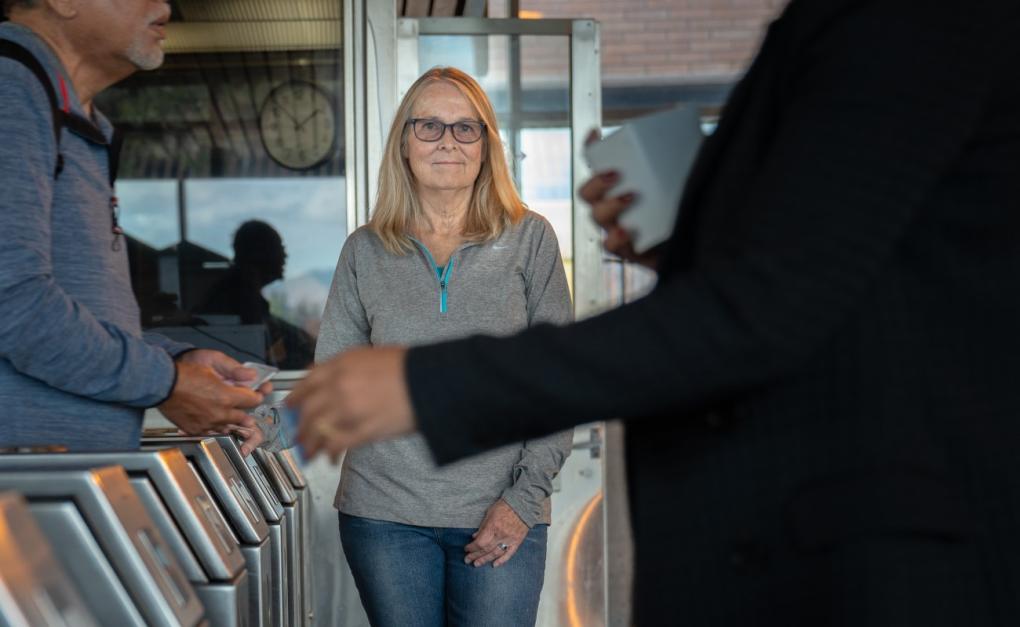
The two women struck up a conversation, and Healey learned Stefania lived in Lucca, Tuscany, and was staying with her aunt for 29 days to practice her English. Healey was charmed by her wit and “beautiful Italian accent.” They chatted the entire way.
When they got to Walnut Creek Station, Healey made Stefania a deal. She would walk home, wait a few minutes, and then return to the station in her car to make sure Stefania had been picked up. Healey told her, “If you’re still there when I get back, I’ll drive you to your aunt’s place.” She returned a half hour later, but Stefania was nowhere to be found.
The two women kept up a correspondence, with Healey sometimes helping Stefania with her English class homework. In the decade since, Healey has watched Stefania fall in love, get married, and have a child. She sends Healey baby pictures now. Healey hopes to meet the family in Italy one day.
“We were at such different points in our lives,” Healey said. “But we just hit it off on BART. It never would have happened if it weren’t for that train ride. I really scored.”
Healey intends to visit Stefania in Tuscany in the near future. She’ll take BART to the airport, as she always does.
Today, Healey’s son – now in his thirties and living in Oakland – does the same commute his mother did for so many years, though he hops on the train a few stops up the line. He even works for the same company.
“I passed the BART baton to him,” Healey said. “Hopefully one day, he’ll get to take it just for fun.”
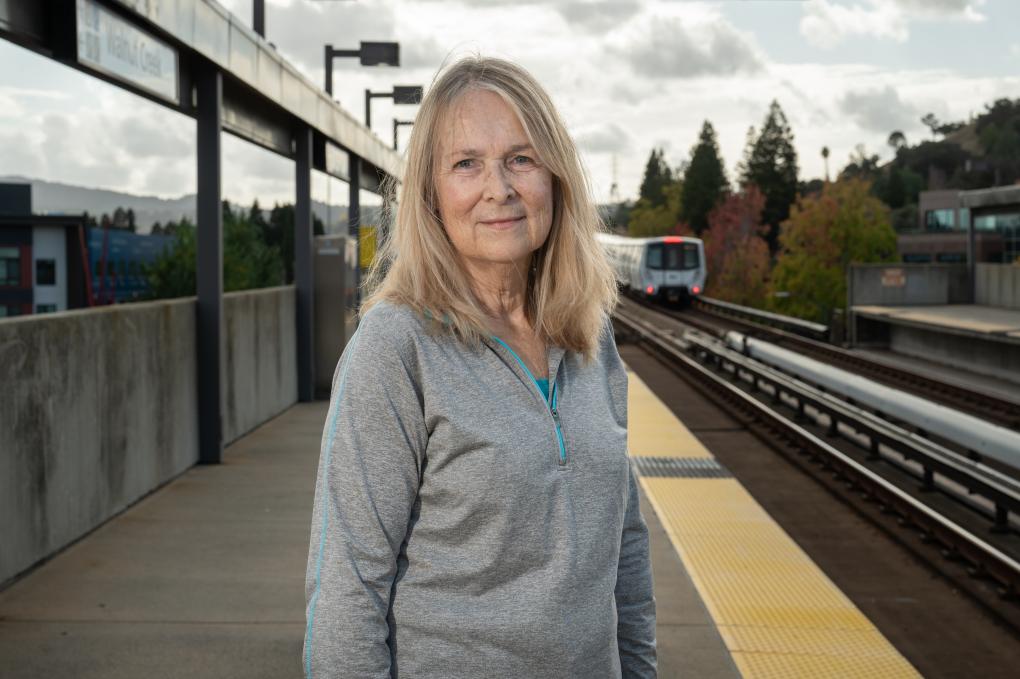
About the BART Connects Storytelling Series
The BART Connects storytelling series was launched in 2023 to showcase the real people who ride and rely on BART and illustrate the manifold ways the system affects their lives. You can follow the ongoing series at bart.gov/news.
The series grew out of BART's Role in the Region Study, which demonstrates BART’s importance to the Bay Area’s mobility, cultural diversity, environmental and economic sustainability. We conducted a call for stories to hear from our riders and understand what BART means to them. The call was publicized on our website, social media, email blasts, and flyering at stations. More than 300 riders responded, and a selection of respondents who opted-in were interviewed for the BART Connects series.
Thousands attend BART’s 50th anniversary celebration
09.12.22 Posing for photos at BART’s 50th Anniversary Celebration and Family Fun Festival on Saturday, Sept. 10, 2022. At 8 am on Saturday morning, Lake Merritt Station and Plaza were already abuzz with activity. Train tracks – un-electrified third rail included – sprawled across a small section of the plaza
BART sustains high ridership during Maze reconstruction
BART sets ridership records, weekday averages up BART carried an average of 9,274 more riders each weekday following the collapse of a portion of the MacArthur Maze on Sunday, April 29. Weekday ridership averaged 355,590 passengers from Monday, April 30 to Thursday, May 24. This was up from the 346,316 riders
BART's continued response to the New Year's Day shooting
Frequently Asked Questions >> Sign up for "BART News Headlines" to receive email updates >> 11.17.09 BART Police Department Review Committee to meet Nov. 25 10.26.09 BART Police Department Review Committee to meet Nov. 4 09.30.09 BART Police Department Review Committee to meet Oct. 5 09.29.09 NOBLE presents
BART issues statement on availability of lead negotiator
With regard to lead negotiator Tom Hocks's availability BART spokesperson Rick Rice said, "Mr. Hock is here today. He will be here tomorrow as previously scheduled and also next Monday and Tuesday and the rest of next week if the mediator deems it necessary to meet. At the time the mediators suggested the 30
Thousands attend BART’s 50th anniversary celebration
At 8 am on Saturday morning, Lake Merritt Station and Plaza were already abuzz with activity. Train tracks – un-electrified third rail included – sprawled across a small section of the plaza. An A-car nose (the pointy part at the front of the train) stood shining, awaiting the many selfies to come. And
BART commits to a future powered by wind and solar power
BART took bold action today to improve the climate footprint of the Bay Area’s transportation sector. Following BART’s adoption of an aggressive and industry-leading Wholesale Electricity Portfolio Policy in April 2017, the BART Board of Directors today approved two 20-year renewable energy power purchase
BART Director Melissa Hernandez, BART’s first Latina board member, brings a wealth of expertise to her leadership

BART Director Melissa Hernandez in the BART boardroom after her appointment to the BART Board of Directors.
This Hispanic Heritage Month, BART is proud to celebrate members of the BART District of Hispanic and Latino heritage, who enrich our organization and the community at large. Over 15% of BART's workforce identifies as Hispanic and Latino, and we have been celebrating them throughout the month with stories, gatherings, and acknowledgements.
Read a profile of BART's new Director of the Office of Civil Rights Rudy Garza here and a profile of Aileen Hernandez, BART Interim Manager for Grants & Funding Advocacy Division here.
Director Melissa Hernandez is becoming accustomed to being “the first.”
She was not only the first Latina to be elected Mayor of Dublin, making her the first Latina mayor in the history of the Tri-Valley, she is also the first Latina to serve on the BART Board of Directors following her appointment as BART Director of District 5 this spring.
“Wow, BART, it took fifty years,” Hernandez said with a laugh. It was five decades too many, but Hernandez, a working mom from an immigrant, working-class background, is already bringing her unique experiences to make BART more responsive and accessible to every one of its riders.
“It makes me emotional. Neither one of my parents graduated high school,” she said. “To have gotten where I am now is really important for my family, for the girls who feel they will not get anywhere because they’re struggling in school and don’t have the right resources. I want to continue to uplift the future generations of women leaders and make certain that all of our institutions are meeting the needs of our region’s many constituencies.”

Director Hernandez (second from left) is pictured at BART’s Project Doneway fashion show with the judges Charleston Pierce, Mary Campbell, and Randy Wells.
Hernandez grew up in a large, loving family with solid working-class roots. She still remembers her parents waking before the sun rose to work in the fields and them returning in the afternoon to take care of the children.
“That is where I get my work ethic and drive for leadership,” said Hernandez.
She continued: “As someone from the immigrant tradition and a working mom myself, these early experiences drove me to support our public schools, improve our communities, and make certain that all working families have access to jobs. And part of that access means being able to get to a job on time, through a reliable, affordable transportation system!”

Director Hernandez with Transit Ambassadors Nequavis Brown and Kingsley Odiurho at Hayward Station.
Hernandez has made championing public transportation the core of her professional life. She has served on numerous transit boards, including as the chair of the Tri-Valley Regional Transportation Authority and the Tri-Valley/San Joaquin Valley Regional Authority.
You might say transportation runs in Hernandez’s blood. For the majority of his life, Hernandez’s father worked as a truck driver. In fact, at 74 years old, he is still at it, though he's driving small hauls now.
“My father has the strongest work ethic I know,” Hernandez said. She remembers taking her dad’s old 18-wheeler for a spin – a memory that has stuck with her now that she’s embedded in the transportation industry.

From left to right: BART board members Mark Foley, Melissa Hernandez, and Rebecca Saltzman are pictured at the BARTmobile's 20th Birthday Party at Orinda Station.
“It is so difficult to drive those things,” she said. “It takes a ton of practice. The same goes for driving those big city buses and BART trains!”
Much like her father’s ever-shifting truck routes, Hernandez’s life has had its twists and turns.
In her teens, she worked at small businesses, including scooping ice cream and working as an office manager at a dental office. Those early work experiences at small local businesses drive her philosophy as a BART board director.
“COVID was a wake-up call for BART,” she said. “It gave the organization time to get back to the basics of quality service, safety, and cleanliness for our customers.”

From left to right: BART Chief Transportation Officer Tera Stokes-Hankins, Assistant Chief Maintenance Officer Greg Lombardi, Deputy General Manager Michael Jones, Director Melissa Hernandez, BART Police Chief Kevin Franklin, BART Police Lieutenant Jaswant Sekhon, Assistant Chief Transportation Officer Eric Matthews.
Being a Latina in a position of power has not always been easy. As Hernandez wrote in her application for the BART Board: “I am well acquainted with being the only person who looks like me, or who has my experiences, in any room I enter.”
Rather than shrinking when she walks into those rooms, Hernandez is focused on elevating her unique experiences and building common ground in these polarized times.
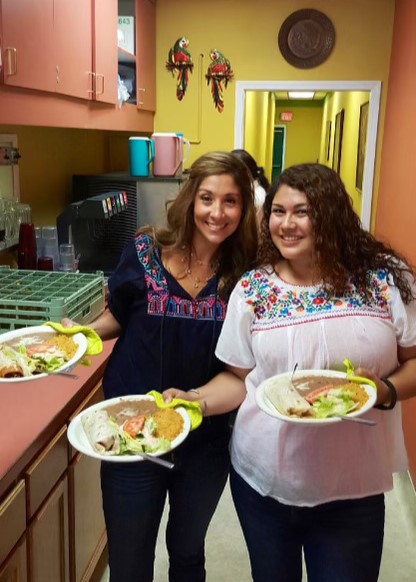
Director Hernandez with Alameda County Supervisor Elisa Marquez at Marquez’s family’s restaurant in Hayward.
“It is important to have many diverse groups of people at the table – and not just different genders, orientations, and ethnicities, but people from different upbringings,” she said. “Much of who we are stems from our childhoods and how we were raised. I am always trying to bring forward the values my parents imparted.”
One such value is mentorship.
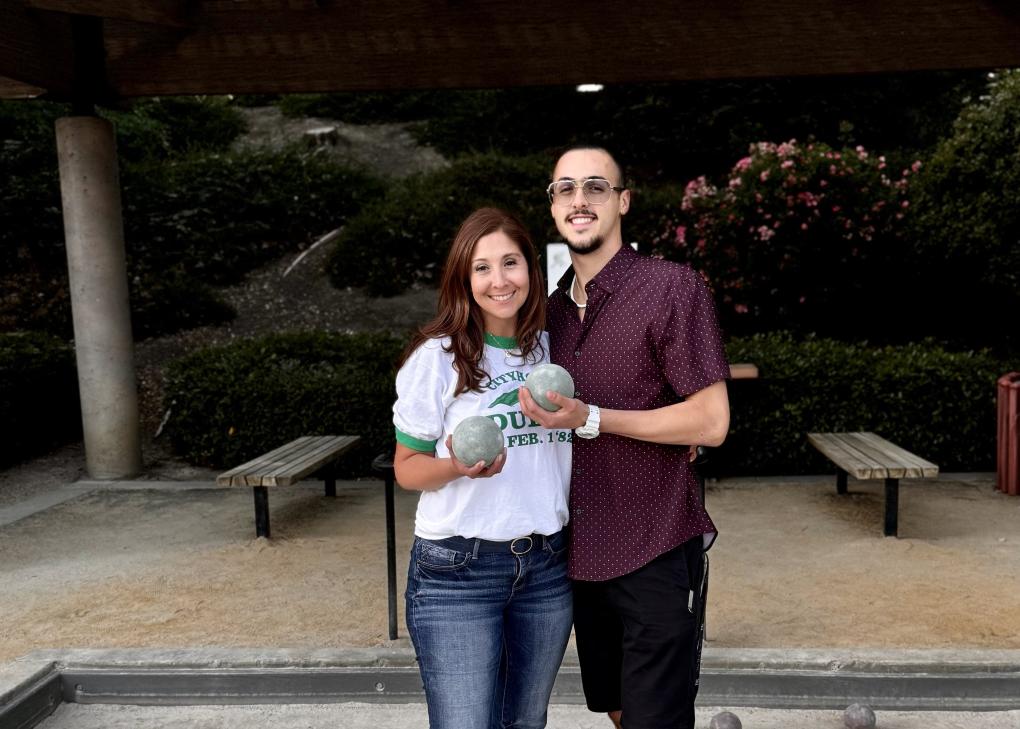
Director Melissa Hernandez with her son.
At the dental office where Hernandez began working as a teenager, she learned the impact a consistently supportive role model can have on your life.
“The solo dental practitioner really took me under his wing, and it spurred my first career in the health services,” she explained.
“Really, it was the folks—whether my parents, small business owners, and other women in leadership— who helped me along the way and made me the person I am. And now that I am here, I want to give back to the communities I serve and most importantly, allow my daughter and other little girls to dream about all that they can accomplish and contribute.”
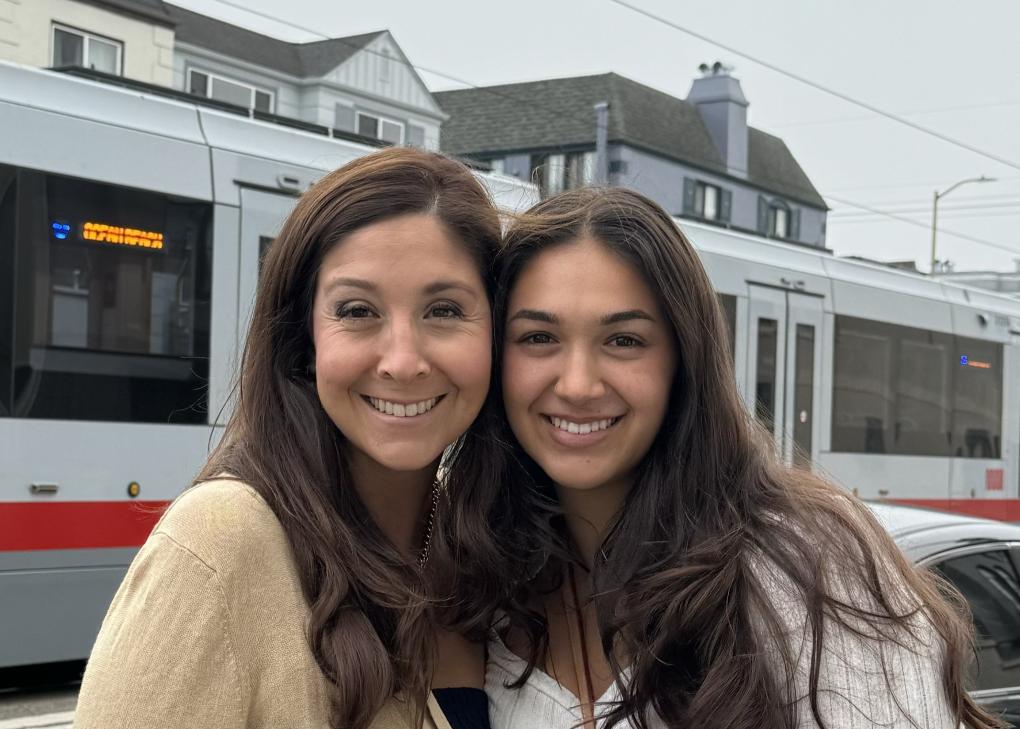
Director Hernandez with her daughter in San Francisco.
Bus agencies increase price of BART Plus Ticket
Beginning July 1, 2009, bus agencies will increase the price of the BART Plus ticket. Because of the economic downturn affecting the participating BART Plus transit partners, the bus portion of the BART Plus ticket will increase $5.00 per period. There is no change to the stored BART value of the BART Plus